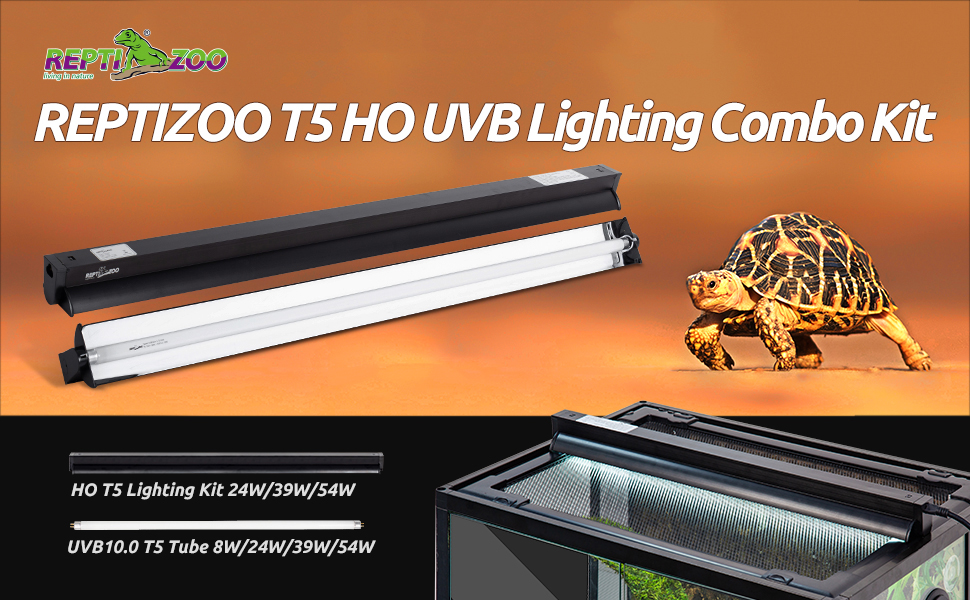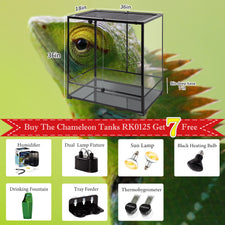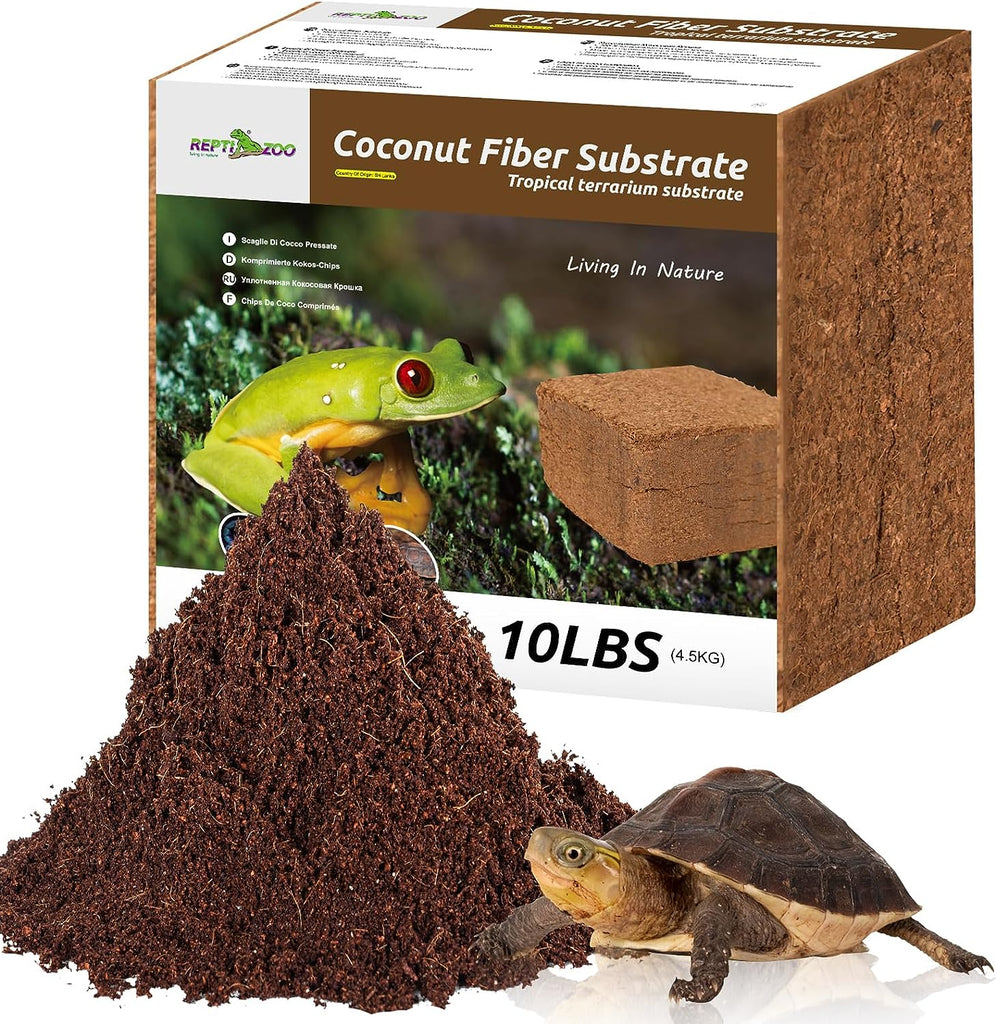You have seen that most people have turtles as their pets but have you ever thought of getting an eastern box turtle as a pet? Yes, you can keep eastern box turtles as pets, and they are very easy to keep in captivity. They have great personalities and grow up to 4 to 8 inches long and if you give them good care these box turtles can live up to 100 years, so they can be your lifelong companions. If you are thinking about getting an eastern box turtle as a pet and you want to have a good relationship with them so they stay healthy then read this article to the end.
Eastern Box Turtle Enclosure
Most of the experts believe that it will be ideal to keep the eastern box turtles in the outdoor area if you have space. Set their pen in an area that is not wet and it also contains shade and receives sunlight throughout the day. Eastern box turtles are not escapers but still, it will be good to establish a 2’ tall wall that is smooth enough to stop them from climbing and also stop them from burrowing. Put a mesh on top of the pen so the predators don’t get a chance to harm them.
If it is not easy for you to keep your turtle outdoors for the whole year, then it's best to arrange an appropriate turtle enclosure inside the house. Eastern box turtles' needs are the same just like other reptiles and they need an enclosure that is big enough that they can move around, thermoregulate, forage, and perform their regular activities. They are very active and whatever space you provide them they will move around and check all of it. They are also terrestrial which means they can dig underground so it's important to choose their floor space carefully.
You can the juvenile and adult box turtles in an enclosure 4 feet in length and 18 inches tall and make sure to meet their heating and lighting needs.
Substrate of Eastern Box Turtle
In the case of eastern box turtles, you need a natural reptile substrate that is similar to what they have in their natural environment. You can provide them with naturally rich organic soil that can retain moisture. Put this substrate in the form of a 4” deep layer in the indoor enclosure and a 12” deep layer in the backyard enclosure.
Another thing to do is to put a 1” layer of leaf litter on the substrate. Box turtles like the leaf litter, in outdoor enclosures use lawn grass as substrate but always let your turtle go near the pile of leaves.
Whenever you bring a new eastern box turtle home keep them in quarantine before adding natural substrate in the enclosure. As the substrates cannot be cleaned daily the contaminated substrates should be removed and replaced. After every 3 to 6 months replace the whole indoor substrate and do thorough cleaning.
Heating of Eastern Box Turtle
Eastern box turtles like to stay in sunny areas in the pen because they like to bask and they need basking temperatures between 85 to 88 F in the shaded area they need temperatures around 74-80 F. Similarly the temperature at night time drops down below 70 F. If you are not finding this in the outside environment then you need to take them inside the house. This can be arranged by using a spot bulb of 100 w at one end of the vivarium. Keep the bulb on for at least 10 to 12 hours during the day and always use a thermostat to control the temperature. During the night time, all the heating and lighting equipment should not be used.
Lighting of Eastern Box Turtle
Eastern box turtles are diurnal this means that they stay active during the daytime. So you have to give them bright light or UVB light in the day to keep them physically active and healthy. Always keep the light source on for 14 hours during the day in the summer and for almost 10 hours in the winter so it will replicate their natural rhythms.
The lighting is the tricky part in the eastern box turtle setup because if you want the right UVB lighting you have to measure the proper distance. You will also need a T5 bulb to provide proper light. This bulb is almost as long as half of the size enclosure and should be placed on the warm side of the pen.
Eastern box turtles need UVB light to produce vitamin D3 in the skin. This D3 helps these turtles to absorb calcium which is important for the growth of bone and body structure. That is the reason reptiles suffer from metabolic bone disease when they don’t get enough UVB.
Humidity
Eastern box turtles used to live humid environment so they will need higher humidity levels plus a lot of moisture in the enclosure. Keep in mind an average humidity of 60 to 80% and make sure that the humidity should never drop below 50% in the enclosure. Always keep an eye on the humidity levels by using the digital probe hygrometer.
No matter whether you are keeping the turtles outdoors or indoors you must always give them entree to a humid place. You can do this by placing a hide box or the cave on the cool side and around that put some soaked substrate to make a humid environment.
To increase the humidity in the enclosure always use a handle pressure sprayer to spray all the substrate every morning. Try not to spray the turtle directly.
Decoration of Eastern Box Turtle
You need to place hide boxes for eastern box turtles, keep one box on the cooler side and the other one on the warmer side. Box turtles really like the hiding places especially for their daily naps. You can make the hide boxes from the plant pots, cork barks, wooden huts, and old large PVC pipes. The box must be large enough that the turtle can easily turn around in the hiding area.
Driftwood, rocks, and plants either natural or fake not only make the enclosure more aesthetic but also very pleasing to look at, it also provides stimulation and enrichment for box turtles. During the cleaning session every week all the accessories in the cage should be cleaned and their location must be changed, this will not only provide mental stimulation to them but also give them a reason to exercise. If there is any live plant in the enclosure keep it potted to protect it from any kind of destruction and damage.
Water
As you know eastern box turtles like to live in high humidity so you need to provide them with water dishes inside the enclosure in which they can get a good soak and swim when they want. The water should be big enough so that the turtle can climb and take a bath and the side should not be so steep that they can't get out. The size of the dish should be large enough that the turtle must be covered up to the elbow when standing and they can easily move in it.
You can also use shop-bought dishes if you are keeping your turtle indoors. If you are keeping your turtle in an outdoor area then making a small pond will be a great choice for them but make sure that the sides of the pond are like the turtles can easily get out. If you are not able to find a large dish then soaking the turtle for 10 minutes in lukewarm water two to three times a week is also good.
Another thing that you should know is that these turtles can drag food in the water and also defecate in the water but that is all normal. It is recommended to change the water in the bowl regularly.
Food
Eastern box turtles are considered omnivores but they lean more towards the carnivore’s side. The stable diet you can provide them should contain high protein or 50% animal protein, 40% vegies and 10% fruits. To provide them with animal protein you can give them earthworms and they can be a regular part of their diet. In leafy green, you can provide them escarole, romaine, mustard greens, swiss chard, peas, carrots, parsnips, etc. However, these eastern box turtles can also eat a small amount of beef heart and cooked chicken once a week. The veggies you are feeding should primarily be rich in beta-carotene and calcium.
Do not feed the eastern box turtles spinach, broccoli, and kale in large quantities because they can cause gastrointestinal upset and urinary issues. Try not to feed them cat or dog food because they are a high source of protein and it can cause kidney problems.
If you look at the feeding pattern you should feed juveniles every day while adults should be fed every next day. A calcium supplement should be given every next day along with some multivitamins to keep the diet balanced with nutrients. Always feed the eastern box turtles during the daytime and mist their food before feeding. If your turtle is a picky eater you can give them finely chopped salad and train them to eat the veggies.
Health Problems
Eastern box turtles are a lifelong commitment and proper veterinary care is important so they live a happy and healthy life in captivity. Even though your turtle is healthy still you should visit once a year at least for a wellness checkup. It is also recommended to do annual blood exams, fecal exams, and parasite exams for their overall health especially if your box turtle is living in an outdoor environment. The most common health issue that these turtles face is gastrointestinal problems and the common signs that appear are abnormal feces and poor appetite.

Respiratory issues are also very common in these turtles, the most common symptoms that appear are labored breathing, bubbles from the nose and mouth, and mucus discharge from the nose and eyes. These problems usually appear when the environment is too dry and cold. Furthermore, another problem that most turtles face is with their shell, like the shell ulcers and rot. The common symptoms that will appear are foul-smelling, and abnormal-looking shells. This usually occurs because of unsanitary conditions and poor diet. If you look at their behavior these turtles are usually shy more than aggressive if they stay in their environment. If you stay consistent and gentle with them they learn to enjoy your company.
Breeding
Breeding of eastern box turtles is very easy, keep the female and male together and they will breed, you don’t have to do anything extra. The only important thing is that they need to be healthy and adult. After mating you should provide a nesting box to the female to lay her eggs. Make sure that the box you provide is big enough that she can easily turn around in it. When the eggs are laid they should be incubated in an incubator at 84F for 60 days to hatch.
Handling
Mostly eastern box turtles like to live alone and they are kind of shy but still you can handle them. If you interact with them regularly they will let you rub their back and also get food from your hand. When you are handling them always pick them up carefully with both hands and by supporting their body and legs from under. Make sure you keep a firm grip and don’t let them fall because it can cause serious injury to them that can be life-threatening. Always clean your hands after handling the turtle.
Conclusion
Eastern box turtles are wonderful and lifelong companions, they just need proper care and environment. If you can provide them the right environment they can be your buddy for life. However, it would be great if you learned thoroughly about these turtles before getting one. Always get an eastern box turtle from a reputable breeder instead of a wild-caught one so that the wild one doesn’t adjust properly in the enclosure environment.










